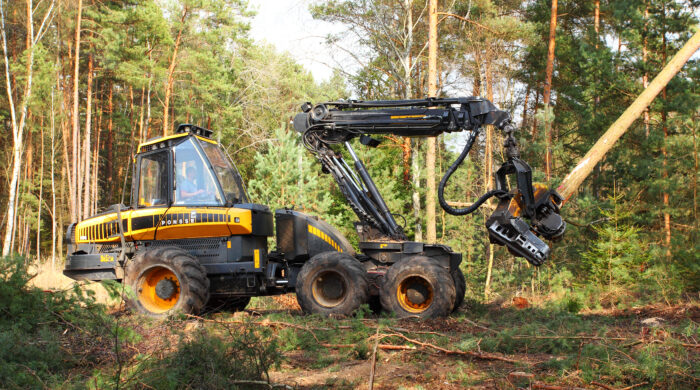Forestry demands a lot from your skidder tires, operating in some of the toughest, most unforgiving terrains for any worksite. The best skidder tires help get equipment in and out of hard-to-access sites, provide stability while carrying heavy loads, and improve productivity.
To get the best from your skidder tires, it is important to understand key tire features that fit your application’s needs. Key features like specialized tread compounds, lug profiles, and tire construction make all the difference between conquering the forest and letting it conquer you. No two forests are the same, which is why the MAXAM team put together this great guide to pick the best skidder tire.
Puncture Resistance
Hazards are the number one obstacle for forestry operations, increasing the threat of punctures and posing a large problem for loggers globally. Stumps, branches, and rocks can damage tires, from
Ply Rating/Load Index
As forestry machinery continues to increase in size and deliver the enhanced power operators’ demand, load-carrying capacity becomes critical to any forestry operation. A tire’s ply rating is an easy way
While choosing a heavier, stronger tire with a higher ply rating may lead to an increase in upfront cost, it will however even out the cost as higher ply rating tires last much longer and provide better value throughout its life.
Construction and Beads
Hand-in-hand with ply rating and puncture resistance is the construction of the tire itself. For such intense work environments, the tire’s construction must on par with what the work demands. Steel belts are often used in skidder tires to provide even more strength and robustness where skidders need it most. Of course, the rubber compounds used in your skidder tires are of equal importance.
These are two key construction components of a forestry tire as they protect your tires from branches, stumps, and rocks. The compounding for your tires is on the front lines fighting against rocks, branches, and roots that will cause your skidder tires to chunk and chip over time.
The performance and longevity of a skidder tire can be significantly impacted by a tire’s bead package. Rim slippage and bead failure during mounting are two occurring challenges for forestry operations. Without a strong bead package, your operation could face a decrease in profit while waiting for a replacement. Some manufacturers design ways to strengthen bead package to prevent unwinding during mounting.
Tread Design
In an industry where small increases in efficiency can add up to the difference between profit and loss, it’s important to pick a tire that conquers the harshest environments with ease. A skidder tire should have a deep and wide tread profile to navigate these terrains, providing the traction required for daily work.
READ NEXT: [4 Things to Check Pre-Shift on Your Skidder Tires]
Maintenance
Skidders tires experience drastic changes; from hot to cold temperatures, mud to rocks, and abrasive soil, causing them to wear prematurely or fail if not properly maintained.
Tire pressure is the most important factor in tire maintenance. Over time, tires will lose pressure naturally and need to be pressure checked/adjusted daily. Running machinery on tires that are not inflated to the manufacturer’s recommended levels of air pressure causes excessive wear, tire separation, and tire-rim slip. The result is reduced tire life, loss of productivity, and increased operating costs.
LEARN MORE: Top 4 Air Pressure Tips for Skidder Tires
Keep in mind that underinflation can cause excessive heat buildup leading to damage to the sidewall, beads, or lining of your tire. A drop of 5 psi can lower your load-carrying capacity by 10% and a drop of 10% will shorten your tire life by no less than 10%. Alternatively, an overinflated tire is more vulnerable to impact damage as the additional pressure stresses the casing.
Tires should be visually inspected before every shift for cuts and impacts that could lead to tire failure. Routine maintenance inspections can lead to discovering deeper cuts that have exposed plies. In these cases, removing the tire and repairing it immediately can extend the life of the tire, increasing the site’s profitability.
Operator training and behavior are both critical to extending tire life. The operator who avoids unnecessary backing up, spinning of tires, and erratic movements will extend tire life on the site and increase production. For MAXAM’s full forestry maintenance guide click here.











